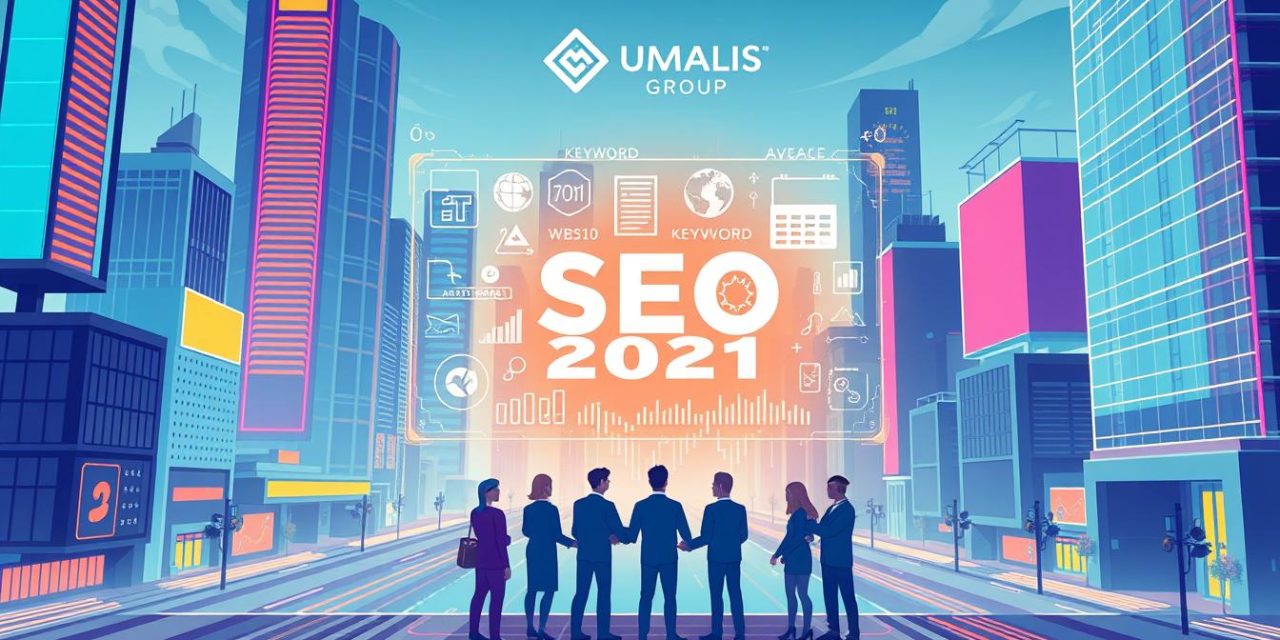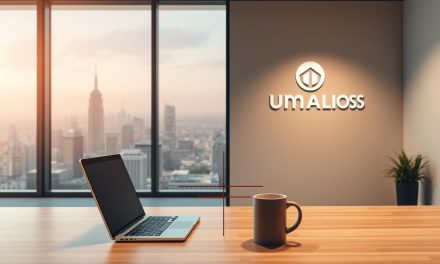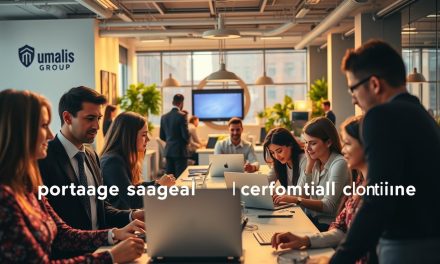Did you know that in 2020, a staggering 90.63% of all web pages got zero organic traffic from Google? This surprising fact highlights a fierce digital competition. Meanwhile, the top-ranked results captured nearly half of all search traffic.
This huge gap shows the critical need for a smart online strategy. For any business, especially in a vibrant market like France, being visible on search engines is no longer optional. It’s essential for growth.
This guide is your roadmap to understanding the shifts that defined digital success. We will explore the key strategies that helped websites climb rankings and connect with their audience effectively.
Whether you’re looking to improve your own site or manage a larger online presence, these insights are for you. We break down everything from technical improvements to content creation that truly resonates with people.
Our goal is to provide you with clear, actionable advice. You will learn how to build a strong foundation that attracts valuable organic visitors and builds your brand’s authority.
Table of Contents
Key Takeaways
- The vast majority of web pages receive no organic search traffic, making top rankings incredibly valuable.
- Organic search traffic converts at a much higher rate than paid traffic, offering better long-term value.
- Adapting to the latest search engine algorithm updates is crucial for maintaining and improving visibility.
- A successful strategy combines technical website optimizations with high-quality, user-focused content.
- Understanding these seo trends 2021 is key to outperforming competitors and achieving digital success.
Overview of SEO Trends 2021
Last year marked a pivotal moment for online visibility as search engines evolved their ranking methodologies. The digital marketing field became more sophisticated, requiring businesses to adapt quickly to stay competitive.
Current Digital Landscape
The 2021 digital environment saw search engines prioritizing user experience above all else. Engagement metrics like dwell time and bounce rate gained importance in ranking decisions.
Search results pages transformed significantly. They now feature rich snippets, video carousels, and local packs. This evolution reduced traditional organic listing space, intensifying competition for visibility.
Emerging Algorithm Updates
Google’s algorithm became increasingly intelligent with systems like BERT understanding search intent contextually. This technology interprets the nuance behind queries rather than just matching keywords.
The focus shifted toward E-A-T principles: Expertise, Authoritativeness, and Trustworthiness. Building brand reputation became as crucial as technical optimization for achieving better search engine results.
These changes required marketers to monitor analytics closely and experiment with new tactics. Success now depends on providing genuine value that keeps visitors engaged across multiple pages.
Mobile-First and Responsive Design

With smartphones becoming our primary gateway to the internet, websites that adapt to mobile users gain a significant competitive advantage. Google now treats the mobile version as the main version for ranking purposes through mobile-first indexing.
This shift means your mobile presence directly impacts your search visibility. Over 60% of all searches happen on mobile devices, and this number continues to grow.
Mobile Optimization Techniques
Creating a great mobile experience starts with responsive design. Your website should automatically adjust layouts and navigation for smaller screens.
Key techniques include optimizing image sizes for faster loading and ensuring buttons are easily tappable. Avoid intrusive pop-ups that frustrate mobile users.
For blog publishers, mobile optimization means writing in shorter paragraphs with descriptive subheadings. This makes scanning easier on small screens.
Implementing Accelerated Mobile Pages (AMP)
AMP technology can dramatically improve your page load times. Mobile visitors have little patience for slow-loading content.
Faster loading reduces bounce rates and keeps traffic engaged. Google’s Mobile-Friendly Test tool helps identify specific issues affecting mobile user experience.
Testing on actual devices is essential since emulators don’t always show real performance. Small improvements can significantly impact both search rankings and conversions.
Zero-Click Searches & Featured Snippets
Google’s search results page transformed from a simple list of links into an interactive answer engine. This shift created what we now call zero-click searches, where users find answers directly on the results page.
Featured snippets appear in approximately 55% of all search results. They’re often called « position zero » because they appear above the traditional #1 ranking.
Leveraging Quick Answer Features
To capture these valuable spots, structure your content to answer specific questions directly. Use clear question-and-answer formats in your writing.
Create concise 40-60 word explanations near the beginning of your page. This « snippet bait » gives Google perfect content to display as a featured result.
FAQ sections work exceptionally well for this approach. They naturally match how people phrase their searches.
Optimizing for Rich Snippets
Rich snippets go beyond basic text answers. They show ratings, prices, or step-by-step instructions directly in search results.
Implement structured data markup (schema.org) to help search engines understand your content type. This tells Google whether you’re sharing a recipe, product review, or how-to guide.
List formats are particularly effective. Use numbered steps for tutorials and bullet points for comparisons. This organization makes your content easy for Google to extract and display.
Enhancing User Experience with Core Web Vitals
Google introduced Core Web Vitals as official ranking signals to measure how real people experience websites. These metrics focus on loading speed, interactivity, and visual stability. They became critical factors for success in the digital landscape.
Optimizing these elements ensures visitors have a smooth and enjoyable time on your page. A positive experience keeps people engaged and improves your website’s performance in search results.
Improving Large Contentful Paint (LCP)
Large Contentful Paint measures how quickly the main content of a page loads. Google recommends this happens within 2.5 seconds for a good user experience.
To improve LCP, optimize your server response time and compress images. Using a content delivery network (CDN) can also help serve resources faster to all users.
Reducing First Input Delay (FID)
First Input Delay tracks the time between a user’s first interaction and the browser’s response. The target is less than 100 milliseconds for a responsive feel.
Minimize JavaScript execution and break up long tasks. Removing unused code and implementing browser caching will significantly reduce delays.
Minimizing Cumulative Layout Shift (CLS)
Cumulative Layout Shift measures unexpected visual movements during loading. This frustrating experience should score below 0.1.
Always include size attributes for images and video elements. Reserve space for ads and avoid inserting content above existing elements without user interaction.
Regular monitoring with tools like Google Search Console helps maintain these vital metrics. This approach ensures both technical excellence and real-world user satisfaction.
Leveraging Local SEO in France

French businesses discovered a powerful advantage in 2021 by focusing their online efforts closer to home. Nearly half of all searches now include local intent, with people looking for nearby solutions.
This approach delivers highly qualified visitors who are ready to engage. Targeting specific French regions means less competition and better connection with your audience.
Geo-Targeted Content Strategies
Create website pages and blog content that speaks directly to French communities. Include local landmarks, regional terminology, and cultural references that resonate with people in specific areas.
Location-specific keywords like « digital marketing course Paris » perform better than generic terms. They attract traffic from users actively seeking services in their area.
Building Trust with Local Audiences
Establishing credibility goes beyond simple translation. Showcase French customer testimonials and highlight your understanding of regional needs.
Optimize your Google My Business profile with consistent contact information. Positive reviews and local citations significantly improve your ranking in the local pack results.
| Tactic | Implementation | Expected Impact | Timeline |
|---|---|---|---|
| Local Keyword Optimization | Include city/region names in content | Higher quality traffic | 2-4 weeks |
| Google My Business Optimization | Complete profile with reviews | Local pack visibility | 1-2 weeks |
| Local Content Creation | Blog posts about regional events | Community authority | Ongoing |
| Structured Data Markup | Local business schema implementation | Rich results appearance | 3-5 days |
Mobile optimization remains critical since 30% of local searches happen on phones. Ensure your website displays clear contact information and directions for mobile users.
These seo trends 2021 strategies help businesses connect with French customers effectively. They create meaningful relationships that drive sustainable growth.
Data, Analytics, and Long-Form Content
The relationship between comprehensive data analysis and content performance became increasingly clear in recent digital strategies. Marketers discovered that informed decisions based on solid metrics led to better outcomes across all channels.
Understanding user behavior through analytics tools provided valuable insights for refining approaches. This data-driven mindset helped businesses create more effective campaigns.
Utilizing Analytics for SEO Insights
Successful marketers moved beyond basic traffic numbers to examine deeper engagement metrics. They tracked bounce rates, time on page, and conversion paths to understand user satisfaction.
Tools like Google Analytics revealed which channels delivered the highest quality visitors. This information helped allocate resources more effectively toward the best-performing strategies.
Creating In-Depth, Evergreen Content
Research showed that comprehensive articles exceeding 3000 words generated significantly more traffic and shares. This long-form approach allowed for thorough topic coverage that answered user questions completely.
Evergreen content continued delivering value long after publication, making it a smart investment. Regular updates based on performance data could boost organic traffic by over 100%.
The combination of analytical insights and quality content creation formed a powerful strategy. This approach helped websites build authority and maintain strong search visibility over time.
Voice Search, Video, and Rich Media Optimization
Digital interactions evolved beyond typed queries to include spoken questions and rich media experiences. This shift required adapting strategies to match how people naturally communicate.
Voice Search SEO Tactics
Voice search queries tend to be longer and more conversational. People ask complete questions like « What’s the best bakery near me? » instead of short keywords.
To optimize for this trend, focus on natural language patterns. Create FAQ sections that answer common questions directly. This approach helps voice assistants find and share your content.
Optimizing Video Content for Better Engagement
Video content generates significantly higher engagement than text alone. Platforms like YouTube function as major search engines themselves.
Include target keywords in video titles and descriptions. Add transcriptions for accessibility and search visibility. Embed videos in relevant blog posts to keep users engaged longer.
Enhancing Images with Proper Alt Tags and Compression
Image optimization improves both user experience and search performance. Descriptive alt tags help search engines understand your visual content.
Compress files to maintain fast loading times. Use descriptive filenames before uploading images. These simple steps enhance overall page quality.
Conclusion
Mastering online visibility today means integrating technical excellence with content that genuinely serves your audience. The approaches we’ve explored work together to create a comprehensive digital strategy.
Successful optimization balances multiple priorities. It combines fast-loading pages with valuable information that keeps visitors engaged. This user-focused approach builds trust and authority over time.
Remember that improvement is an ongoing process. Regular monitoring and adaptation will help you stay ahead. These methods create sustainable organic growth that delivers long-term value for your website.
By applying these principles, you’re building a foundation for continued success in search engines. The effort you invest now will pay dividends well into the future.
FAQ
What are the most important ranking factors to focus on this year?
This year, search engines like Google are heavily prioritizing user experience. Key factors include Core Web Vitals, mobile-friendliness, and high-quality, helpful content that directly answers user questions. Building a fast, stable, and easy-to-use website is more critical than ever for digital success.
How can I optimize my website for voice search?
Optimizing for voice search involves using natural, conversational language. Focus on long-tail keywords and structure your content to answer specific questions directly. Creating a dedicated FAQ page is a great way to target common queries that people ask their smart speakers and assistants.
What is a featured snippet, and how do I get one?
A featured snippet is the highlighted block of text that appears at the top of Google’s results page. To increase your chances, provide clear, concise answers to common questions within your content. Use headers, bullet points, and tables to structure information in a way that search engine algorithms can easily extract.
Why is local search engine optimization so important for businesses in France?
For French businesses, local optimization is essential for attracting nearby customers. This means ensuring your business is accurately listed on Google My Business, using local keywords, and collecting positive reviews. Building trust within your community directly influences your visibility in local search results.
How does video content impact my search strategy?
Video content significantly boosts engagement and can increase the time users spend on your page. Platforms like YouTube are powerful search engines themselves. Optimize your videos with descriptive titles, transcripts, and relevant keywords to improve their discoverability and drive valuable traffic to your website.





